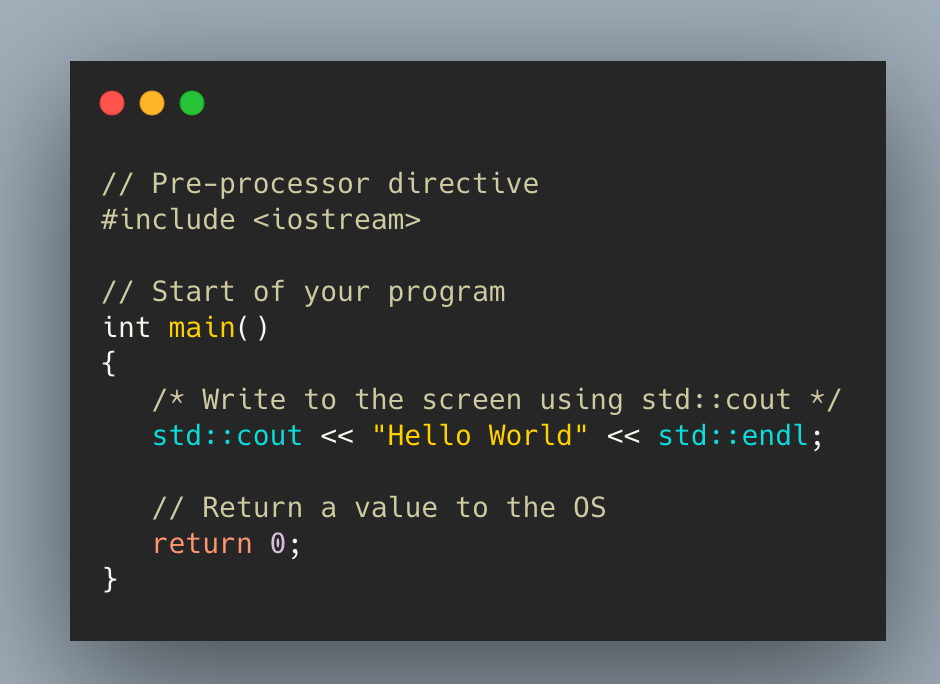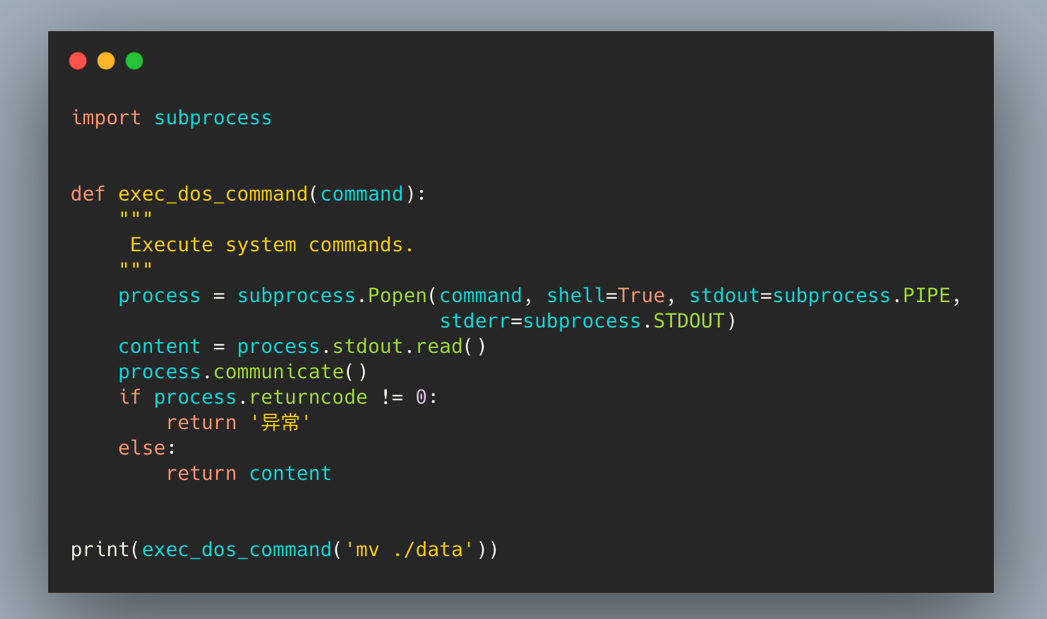C++ 编程:程序组成部分 & 函数 & 输入
首先从一个最简单的程序来看 C++ 程序结构:

第一部分:#include <iostream> 专业名词叫:预处理器编译指令 其实效果就类似于导包;
第二部分:main() 程序的主体 C++ 程序是从这里开始运行,调用其它功能函数;
第三部分:std::cout << "Hello World" << std::endl; 程序的功能,这行就是输出 Hello Word;
第四部分:return 0 在 C++ 中,除非明确声明了不返回值,否则函数必须返回一个值。main( ) 也是函数,且总是返回 一个整数。这个整数值被返回给操作系统,根据应用程序的性质,这可能很有用,因为大多数操作系 统都提供了查询功能,让用户能够获悉正常终止的应用程序的返回值。在很多情况下,一个应用程序被 另一个应用程序启动,而父应用程序(启动者)想知道子应用程序(被启动者)是否成功地完成了其任务。程序员可使用 main( )的返回值向父应用程序传递成功或错误状态。也就是说我们可以通过反回 code 让其它程序获得程序的运行情况,例如我们使用 Python 来调用系统 mv 程序,此时我们可以返回的 code 来判断程序是否出现异常。

命名空间
名称空间的概念,请看下方代码示例:
// Pre-processor directive
#include <iostream>
// Start of your program
int main()
{
// Tell the compiler what namespace to look in
using namespace std;
/* Write to the screen using cout */
cout << "Hello World" << endl;
// Return a value to the OS
return 0;
}
using namespace std; 这个可以理解为 Python 中的 from xxx import xxx
函数
函数定义也是比较简单的,首先你得先确定返回的数据类型,返回的数据必须是该类型。
#include <iostream>
using namespace std;
// Function declaration
int DemoConsoleOutput();
int main()
{
// Function call
DemoConsoleOutput();
return 0;
}
// Function definition
int DemoConsoleOutput()
{
cout << "This is a simple string literal" << endl;
cout << "Writing number five: " << 5 << endl;
cout << "Performing division 10 / 5 = " << 10 / 5 << endl;
cout << "Pi when approximated is 22 / 7 = " << 22 / 7 << endl;
cout << "Pi actually is 22 / 7 = " << 22.0 / 7 << endl;
return 0;
}
上方 Code 就是一个非常简单的函数调用。
##
#include <iostream>
using namespace std;
int input_df() {
int InputNumber1;
cout << "第一个数: ";
cin >> InputNumber1;
int InputNumber2;
cout << "第二个数: ";
cin >> InputNumber2;
cout << "return: " << InputNumber1 * InputNumber2 << endl;
return 0;
}
int main() {
std::cout << "Hello Word\n";
input_df();
return 0;
}




